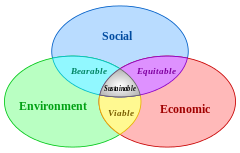 According to Brad Feld’s Startup Communities, universities should be feeders, rather than leaders, in their local startup ecosystems. This means that universities should supply talent and provide support for local startups, instead of positioning themselves at the center of entrepreneurial activity. Although it may be difficult for universities to view themselves as feeders, this approach has merit and can ultimately lead to more cohesive startup ecosystems, as well as improved relations between universities and local communities. Additionally, acting as feeders can help universities become more competitive, secure increased funding, and create employment opportunities for students. With broader community interests and self-serving goals in mind, universities should play three roles in startup ecosystems: suppliers, connectors, and accelerators. Suppliers What do startup ecosystems need most? Talent. This comes in the form of founders, employees, and service providers. Universities are well-positioned to cultivate entrepreneurial traits and interests among their students, shaping them into key contributors for their local startup ecosystems. Since the modern workplace requires entrepreneurial skills and students are demanding them, it is in the best interest of universities to facilitate entrepreneurial learning. One of the simplest ways to cultivate entrepreneurial students is by offering an entrepreneurship curriculum. However, entrepreneurship blurs the barriers between traditional university departments, so it is best to create a cross-disciplinary initiative, rather than merely setting up an entrepreneurship center in the business school. The courses within the entrepreneurship curriculum should be taught by practitioners. Students should also have opportunities to gain field experience through research, prototyping, and testing. Another basic way to stimulate entrepreneurship is through student clubs and organizations that focus on startups. These may take the form of entrepreneurship clubs, consulting organizations, or investment groups. Such organizations will often evolve into research labs or fall under the umbrellas of larger entrepreneurship initiatives. They provide excellent starting points for universities that have little formalized entrepreneurship programming. In addition to supplying entrepreneurship organizations and curriculums, universities can foster entrepreneurship by encouraging students and faculty to engage with local startup ecosystems, which we will cover in the following sections. While talent is the bread and butter of startup ecosystems, technology also plays an integral role. Universities often contain technology transfer offices (TTOs) that license and patent internally developed technologies to existing companies. As startups increasingly drive innovation, the traditional models to release and transfer research findings from universities to feed innovation are often outdated and broken, causing a large portion of research findings to be underutilized. Universities may want to transition from traditional technology transfer models to Open IPR, a process with which Startup Commons can assist. Connectors By acting as benevolent connectors, universities can start to see significant payouts from assuming the position of startup-ecosystem feeders. These payouts will include increased competitiveness, due to higher visibility, and improved community relations, stemming from collaborative interactions. Most significantly, alumni, faculty, and friends will donate more money to universities that act as connectors within their local startup ecosystems. With rewards to be reaped, what actions can universities pursue to convene and connect startup enthusiasts?
When universities act as connectors within startup ecosystems, win-win situations result for everyone involved. Accelerators Serving as suppliers and connectors are the most important roles of universities in startup ecosystems. However, ambitious universities can deepen their impact by establishing accelerator programs. Accelerators are designed to help entrepreneurs find product-market fit, acquire outside capital, and scale their companies. They can be publicly or privately funded, and under most circumstances, anyone can apply. These programs always provide education, along with mentorship, and they often make seed-stage investments in exchange for equity stakes in cohort companies. While university incubators are fairly commonplace, university accelerators are a more novel concept. Since universities can provide housing, food, and workspace, they are good candidates for accelerators. That being said, universities must have strong relationships with entrepreneurial mentors, investors, and service providers within their local startup ecosystems before accelerators can be considered. Also, accelerator initiatives should be piloted with student-run companies before universities open the floodgates to everyone. Empower the Entrepreneurs
On a final note, academics and administrators should let entrepreneurial students and faculty lead these types of initiatives. Entrepreneurs gravitate toward one another, so allow university entrepreneurs and startup-community members to design how they engage with each other. In the midst of the holiday season, you will hopefully take some time away from business to relax with your children and younger family members. If you are lucky, this relaxation time will involve playing with legos. What can entrepreneurs learn from their family shenanigans with these timeless toys?
Be a Builder. If legos came in pre-made sets, they would not be any fun. Children view them as superior to other toys precisely because assembly is required. Once we become adults, we often hesitate to do things for ourselves and get easily frustrated when we have to assemble things (e.g. IKEA furniture). The holidays provide the perfect time to reconnect with your inner child and reinvigorate your builder spirit. Creating something out of nothing can be an immensely rewarding experience. Just watch your children as they focus intently for hours on crafting their lego masterpieces. Whether you are developing software or a startup ecosystem, you should imagine yourself putting lego pieces together, patiently watching as your project takes shape before your eyes. Create Your Own Adventures. Legos are not meant to be admired on the shelf. They are designed for play, breakage, and reassembly. What do children do once they have assembled their lego sets? They imagine entirely new worlds, acting out stories with the pieces. Children possess true vision. They know how to blur the lines between fiction and reality. Unfortunately, adults often prioritize reality over their right-brain-driven imaginations, but they need not always view life in such a way. If you want to be a successful entrepreneur, you should learn a lesson from the children in your life and get lost in your imagination from time to time. Construct a model of the society you would like to see, and work backward to figure out how to make the changes that you envision emerge in reality. What do people in your ideal world do? How do they interact with each other? What technologies dictate their behavior? Practice stretching your imagination, and create your own adventures. Will You Follow the Directions? In the modern era, legos come in sets with directions. However, you may want to try gifting your children boxes of miscellaneous pieces, free from guidance or instruction. Without specified directions, children will amaze you with the designs that emerge from their unconstricted minds. The mark of a true builder is being able to create without instructions. As an entrepreneur or ecosystem developer, you will encounter many mentors and advisors who have previously been in your shoes. They will offer you advice and guidance on what to do, but whether or not you follow their instructions is up to you. Remember that every case possesses unique characteristics. Sometimes it is best to experiment with entirely new ways of conducting business or developing ecosystems. After all, that is how we ultimately make progress as a society. Do not be afraid to pave your own path and refrain from following the directions. Happy Holidays from the Startup Commons team! In case you are not familiar with Harry Potter, children are handpicked for their magical abilities at the age of eleven and shipped off to boarding school for indoctrination into the wizarding world. To my understanding, no one has established secret schools to train the next generation of leading tech entrepreneurs. However, “Estonia’s government has backed a project to teach coding to children starting at age 7,” according to Techstars. Governments, communities, and educational institutions all hope to foster higher levels of tech entrepreneurship since startups create 2/3 of new jobs. One of the most critical factors in building startup ecosystems is cultivating talent. How can countries, regions, and cities indoctrinate their populations into tech entrepreneurship? Surprise! Welcome to the ranks of the elite. When Harry Potter was invited to Hogwarts School of Witchcraft and Wizardry, he didn’t take standardized tests or fill out a common application. Harry had proven his magical potential and abilities, so the school sent him a letter by owl. How are you inviting people into your startup ecosystem? Although the Kauffman Foundation recommends that startup ecosystems should be open and inclusive, adding an element of exclusivity to your startup ecosystem may increase its attractiveness. Whether you work for a startup or entrepreneur-support organization, you can identify promising talent, such as graduating students, and personally invite them to meet-ups, hackathons, and small gatherings, which provide introductions to your team and other ecosystem parties. Relationships with university faculty, administrators, and students can help you identify people to recruit. The key to getting talented people into your ecosystem is making them feel special and comfortable. Once people have entered your ecosystem, the fun truly begins. With Startup Commons’ Digital Ecosystem Applications, you can access knowledge about all of the people and companies within your startup ecosystem. This enables you to strategically form relationships that encourage collaboration, mentorship, and investment. Similar to recruiting talent, relationship formation requires that you to take a personalized approach. Experiment with one-on-one introductions, bring-a-friend events, group activities, secret societies, etc. Different approaches work well for forming different types of relationships. Establish a Ministry of Magic.
Since wizards operate largely underground and possess power that the general population lacks, the wizarding world has its own governing body, the Ministry of Magic. If your goal is to develop a startup ecosystem, wouldn’t it make sense to create a governing body that focuses on tech entrepreneurship? Ideally, this ministry would break down silos by blending education, business, economic development, and environmental policy. The overarching goal of the ministry would be to foster sustainable economic growth and job creation by building a startup ecosystem. Working in partnership with the private sector, this ministry could connect, visualize, and benchmark the startup ecosystem. Most importantly, the ministry could craft policy that specifically benefits and attracts entrepreneurial talent. To accomplish this effectively, it is best to involve entrepreneurs in the decision making process. Since the startup community will be the primary stakeholder in the ministry’s policies, the community should have an influential voice in the ministry’s decisions. Encourage Collaborative Competition. In Harry Potter and the Goblet of Fire, students from all of the different wizarding schools compete in the Triwizard Tournament. Since the students from various schools all stay at Hogwarts, they collaborate and learn from one another while the tournament is taking place. The competition fosters an exchange of ideas, while allowing the schools to showcase their talent. Similarly, startup ecosystems should foster collaborative competition internally, as well as externally. You can use startup awards, such as the CT Entrepreneur Awards, to recognize crucial contributors within your startup ecosystem. In addition to rewarding contributors, startup awards spotlight role models who can influence your entrepreneurial culture. Awards give people and companies something noble for which to strive. Another way to foster collaborative competition is through pitch competitions. You can start with local pitch competitions, and the winners can go on to compete with winners from other startup ecosystems. Pitch competitions provide an excellent mechanism for ecosystems to share inspirational ideas, both internally and externally. Startups in your ecosystem may want to use the Startup Commons Business Plan Tool to prepare their pitches or refer to this post on pitching. Find your magic wand. As Harry Potter knows, the wand selects the wizard, and no two wands are exactly the same. When you are developing your startup ecosystem, do not try to copy what worked in Silicon Valley. Every ecosystem has a unique style, so different strategies are necessary for talent cultivation. Startup Commons’ KPI Data Dashboard enables you to track ecosystem metrics so that you can identify policy strategies and measure their impact. Stay persistent, and find your magic wand for indoctrinating tech entrepreneurs. Pitching your startup business is a skill that you must master if you hope to recruit a team, form an advisory board, and raise capital. Startup Commons’ business plan tool encourages you to create a 3-5 minute pitch for your business. This post will offer you guidance on how to best craft your business pitch to effectively sell people on your startup vision. Start With Why (Problem Statement) Simon Sinek’s best-selling book, Start With Why, explains how leaders can inspire people to take action. When you are selling people on your vision, according to Sinek, you should proceed from why, to how, to what. It is important to convey your “why” so that people understand your reason for pursuing your vision. Sinek’s advice implies that you should start with the problem when you are pitching your business. You should open your presentation with the problem you are working to solve and explain why it matters. A combination of storytelling and statistics can help you appeal to both emotional and logical audience members, which will effectively draw them into your pitch. For example, if you are creating a business that charges cell phones in the wake of natural disasters, you could start with a story of a family that struggles to contact relief agencies after their home has been destroyed and communications lines cut after Hurricane Harvey. Adding statistics, you could also explain how the Atlantic hurricane season caused roughly a thousand deaths with damage costs exceeding $350 billion. Personal stories may possess even greater impact. If your family was the one in the hurricane, then you may invoke a more empathetic response from your audience. That being said, you should also use to statistics to ensure that your problem statement holds up to rigorous analysis. Stick With One Sentence (Value Proposition) When you are making your value proposition, you need to be concise. Try to convey what your company does in one sentence. For example, you can say, “We sell (product) to (customer), which produces (type of value) for (customer).” Remember, most laypeople will be unfamiliar with the intricacies of your business model, unless they are experts in your industry. It is important that you give people something they can understand because no one wants to invest in a company that he or she cannot comprehend. Expand On Operations (How We Work) Once you have drawn people in with your persuasive problem statement and concise value proposition, you should go into greater detail about how your company operates. This can be an explanation of your supply and distribution chains if you are selling a product, or it can be a high-level overview of how your software functions. Although you do not want to give away the secret sauce, you should give your audience enough information to grasp your operating model and your product’s value. Captivate With Market Capture (Target Market) As part of your business planning, you will need to identify your target market and calculate how much of it you can capture. Creating target-customer profiles and acquiring hard data on your market size play an essential role in crafting your marketing strategy, as well as selling your vision. When you pitch your business, you should start with a description of your target customer and elaborate on how much she will spend on your product individually, as well as collectively. If you want to demonstrate expansion potential, you may want to highlight a future, as well as a current, market. For example, your current market could be populations hit by natural disasters and your future market could be travelers who want new, convenient ways to charge their phones. Differentiate Your Business (Competitive Analysis) What sets you apart from your competitors? As part of your market analysis, you must assess your competition and define your position in the market. Sell your audience on your expertise regarding the competitive landscape, and explain what differentiating factors set your business apart. If you say that you have no competitors, then your audience will think that you have failed to conduct adequate research. Make sure that you know your market, even if you truly believe you possess monopoly power. Stay Rooted In Reality (Projections) In your startup pitch presentation, you need to show that your company has a bright future. This is where projections come into play. The metrics you use are up to you. However, you should probably include customer acquisition, monthly/quarterly revenue, and an impact metric (e.g. jobs created, government savings, or CO2 reductions). Although you want to show positive growth, keeping your numbers rooted in reality is important. You should use historical data, competitor comparisons, and any other insights you can find to ensure that your growth projections make sense. Furthermore, you do not want to make promises that you cannot keep. Make realistic, persuasive projections. Don’t Forget To Sell Yourself (Team) Remember, you are not only selling your product and vision… You are selling yourself. Your audience needs to know who they are dealing with, so describing your team’s background is important. While credentials can be persuasive, you should also discuss your team member’s accomplishments in quantitate terms (e.g. she increased customer retention by 67% at her previous company). Storytelling can also be useful when describing your team, but make sure to keep it short and sweet. If you are using visuals, pictures are a great way to help your audience put names to faces. The Almighty Ask (What We Need) Whether you are pitching investors or recruiting team members, you must have a clear, concise ask that is backed up with logical reasoning. Being able to explain what you will do with investment capital and why you need certain people on your team is essential for closing deals. This goes back to starting with why. According to Dr. Eban Goodstein, there are three things you need to remember when making an ask:
The first two steps are fairly clear, but the last one needs some explaining. After you make your ask, you may be tempted to make excuses or lower your ask. Do not make these mistakes. Instead, just be quiet, and wait for your audience to respond. Asking is often the most difficult part of a startup pitch. One helpful way to view the ask is to consider yourself generous for granting people the opportunity to participate in your vision. You are not tricking people into investing or working with you. Rather, you are presenting them with a once-in-a-lifetime opportunity. How To Proceed
Now that you know how to create the standard elements of your startup pitch, feel free to add in other details to spice up your presentation. If you have questions, please reach out to Startup Commons, and we hope that you enjoy using our business plan tool. Washington, DC may be known as the center of the U.S. Government’s operations, but something else makes the city tick. When I lived in Virginia, I spent every other weekend visiting friends, attending events, and meeting with entrepreneurs in the nation’s capital. Although few of my friends and contacts work for the government, they all choose to live in the high-priced, politically-charged metropolis. Why? Cultural Capital. Any respectable data geek knows that you should only concern yourself with problems and solutions that can be quantified. For the sake of quantifiability, most cities and countries measure their success by economic metrics, such as GDP. Economic indicators tell some of the story, but they also miss a significant part of the picture. Cities attract, as well as retain, residents and tourists by providing cultural capital, rather than solely robust economies. Defined by Pierre Bourdieu in 1985, cultural capital consists of a person’s social assets, which promote social mobility in a stratified society. These social assets include education, intellect, style, etc. Similar to people, cities and countries can raise their social status through the accumulation of cultural capital. This complex process involves harnessing the mystic powers of creativity and feedback loops. Luckily, the Startup Commons team has broken down the cultural capital into a simple equation for data-driven policy designers: Innovation (Education + Entrepreneurship + Art) = Cultural Capital Creative people, who produce innovations, are drawn to specific regions for educational experiences, business opportunities, and artistic exposure. They are also drawn to other creative people. Cities and countries build cultural capital by infusing innovation into their education, entrepreneurship, and art sectors. As cultural capital increases, more creatives will move to the region, spurring higher levels of innovation and cultural capital.
Sounds simple, right? Not exactly. In order to attract creative people, policy makers must quantify and understand what is happening in their innovation ecosystems to craft communities that appeal to creative people. Fortunately, Startup Commons has constructed a suite of tools to help policy makers and community organizers connect, visualize, and benchmark their startup ecosystems. In addition to driving economic growth and job creation, Startup Commons’ digital solutions can help you understand and build cultural capital. Do you envision your community as a creative hub? Let Startup Commons help you create cultural capital. How can a contemplative critique on religious teachings, published in 1841, apply to modern, tech entrepreneurship? What if the essay conveys transcendental knowledge, individualism, and Indian religious principles? Okay, this is starting to sound like Steve Jobs’ wilderness years… Do you want to see where it goes?
Here are three lessons in entrepreneurship from Compensation, an essay by Ralph Waldo Emerson: Do. (Startup Commons’ mantra in case you were wondering) “Do the thing, and you shall have the power.” This quote from Ralph Waldo Emerson’s Compensation sums up entrepreneurial existence. Anyone can conceive a grand idea, but the people who manage to execute on their visions are few and far between. Furthermore, all of the rewards and accolades go to the doers, not the theorizers and critics on the sidelines. Whether you are looking to build a company or cultivate a startup ecosystem, there is only so much theorizing and planning you can do. At a certain point, you just need to act on your ideas and focus on implementation. Influence and power come to those who do; the entrepreneurs of the world. Karma (You get what you give) Although Emerson studied at Harvard Divinity School, he was heavily influenced by Indian religious teachings, which are reflected in the Transcendentalist movement he founded. Karmic principles are a resounding theme in Compensation. “Always pay; for first or last you must pay your entire debt,” wrote Emerson. “He is great who confers the most benefits.” How does this apply to high-tech entrepreneurship? In the face of tumultuous ups-and-downs, entrepreneurs must remain resilient and optimistic that the work they put in will eventually pay off. Data-driven businesses, such as social networks and fintech operations, often require significant upfront investment before they can be monetized since value often comes in the form of network density and information exchange. The same principles hold true for bloggers and content creators who must build up followings before they can cash out on their networks. Essentially, you will eventually be repaid if you provide value, but on the flip side, you will have to pay if you take value away from society. Investment (Invest in human capital) “It is best to pay in your land a skilful gardener, or to buy good sense applied to gardening… So do you multiply your presence, or spread yourself throughout your estate.” Even back in 1841, Emerson understood the power of division of labor and delegation. He also knew that “the real price of labor is knowledge and virtue, whereof wealth and credit are signs.” When you are building a venture, investing in talent and delegating responsibility play vital roles in startup success. Additionally, if you are an angel investor or venture capitalist, you must seek out entrepreneurs with proven knowledge and virtue. Since many entrepreneurs and startup employees may lack track records and wealth, investors and lenders should look for other signals when seeking to extend credit. KPIs and data can provide strong signals for investors. For example, information on events that founders attend, accelerators in which a startup participates, and social networks that employees cultivate can provide valuable insights regarding a team’s knowledge and virtue. What have we learned from Ralph Waldo Emerson?
In the United Nation’s World Economic and Social Survey 2013, the Department of Economic and Social Affairs stated that “unless human development and environmental protection goals are integrated, they will remain in competition, jeopardizing both sets of goals.” How can we reduce global income inequality, lift over 1 billion people out of extreme poverty, and reverse environmental degradation simultaneously? This complex issue requires a fundamental shift in how we approach economic development. Governments need to harness the power of public-private partnerships to align human development and environmental protection goals. What follows is a three-pronged strategy to help us pursue sustainable development. 1. Create public-private partnerships for sustainable development Public investment in economic development should focus on leveraging private resources and capital for sustainable initiatives. In order to leverage private resources, the public sector can pursue pooling mechanisms, equity finance, social impact bonds, job bonds, trade credit offsets, and data sharing. The goals of public-private partnerships should be to create an overarching authority, assign roles to key players, and streamline funding for development. In such arrangements, it is essential that the public sector keeps pace with the private sector and that outcomes are measurable. In order to foster sustainable development, public-private partnerships should have two objectives: fostering startup ecosystems in developing economies and using social psychology to alter consumption and investment habits. 2. Foster startup ecosystems in developing economies As our global society becomes more interconnected and the pace of technological change accelerates, fostering startup ecosystems is the most effective way for developing economies to cultivate environmentally-friendly businesses, compete on a global scale, and boost GDP. In order to foster startup ecosystems, the public sector should focus on partnerships that utilize equity finance, data sharing, and trade credit offsets. Regarding equity finance, the public sector can make direct investments, taking stakes in companies, or indirect investments, investing in equity and debt funds. It is wise for governments to pursue both strategies by making direct investments in sustainable, startup-ecosystem builders and participating in sustainable venture capital, as well as real-estate, funds. Data sharing plays an essential role in enabling governments and ecosystem builders to visualize, benchmark, and accelerate startup-ecosystem growth. On the ground level, governments need to convince startups and entrepreneur-support organizations to share their data. This can be done by giving users control of their own data and tying funding incentives to data sharing. At the top level, governments and key ecosystem builders should form public-private partnerships to manage and act on aggregated data. Organizations, such as Startup Commons Global, can assist in the formation of data-sharing partnerships. According to M-CAM, the originator of TCOs, offsets are like coupons for foreign businesses that can be repaid to the country with which they are conducting business in three ways: cash, training/capacity building (3X cash value multiplier), and proprietary technology transfer (10X cash value multiplier). Governments should focus on using trade credit offsets to encourage foreign businesses to train entrepreneurs and supply knowledge to startups within their national ecosystems. While fostering the growth of startups, governments should simultaneously work with the private sector to alter consumption and investment habits so that markets effectively support sustainable startups. 3. Use social psychology to alter consumption and investment habits In “The Psychology of Human Misjudgment”, Charlie Munger, Vice-Chairman of Berkshire Hathaway, outlines 25 social-psychological principles that affect human behavior. By applying a mixture of these principles, public-private partnerships can influence changes in consumer and investor habits, resulting in more sustainable business practices. To alter consumer behavior, state and local governments should use social impact bonds and job bonds to leverage private investment for bolstering the market-penetration efforts of sustainable, local startups, such as aquaponics farms. These innovative financing mechanisms are preferable to subsidies because they minimize downside risk for governments, provide political viability, and give private investors skin-in-the-game. Once private investors have infused capital into startups, the parties should focus marketing and sales efforts around Munger’s principles. For example, they can use Influence-from-Mere Association Tendency to spread local-food preferences within community organizations, such as churches and university clubs. Additionally, they can harness the power of Inconsistency-Avoidance Tendency by having people make public-voluntary commitments to the local food movement. In order to entice investors to fund sustainable initiatives, governments are already experimenting with securitization of small-scale, green loans. These loans can cover sustainable initiatives, such as businesses and homeowners putting solar panels on their roofs. Since people are skeptical of securitization after the 2007-2008 financial crisis, social proof will be essential in creating the market for green asset-backed securities. As a higher number of reputable institutions invest in such securities, more investors will join the movement, due to social proof. By applying simple social psychology, the public and private sectors can collaborate to reduce carbon emissions, while simultaneously opening new markets and creating jobs. 4. What can you do? Whether you are acting in the public or private sector, you can do three things to help with human development and environmental protection:
Are you a consultant or an entrepreneur? - Learn more about Growth Academy Online Training & Certification Programs Download our startup booklet and watch our videos to learn more about our framework to help startups to grow without "reinventing the wheel" and without wasting lot of time trying to connect the dots. The framework is based on the startup development phases and aims to remove the highest universal risks on the startup journey. The “Jemez Principles” for Democratic Organizing list six concepts that NGOs, governments, and activists should follow to empower the people they represent. These principles are directly applicable to startup-ecosystem development.
1. Be Inclusive When developing startup ecosystems, all stakeholders should have seats at the table. These stakeholders include owners, employees, investors, governments, NGOs, large corporations, traded businesses, and local businesses. Do not fear different perspectives. They will ultimately contribute to stronger solutions. 2. Emphasis on Bottom-Up Organizing Startups must play a central role in startup-ecosystem development. If you want to grow your startup ecosystem, it is essential to mobilize founders and employees. You can create as many tax incentives and angel investor networks as you want, but if people are not motivated to start and scale companies, growing your startup ecosystem is a lost cause. 3. Let People Speak for Themselves Startup founders and employees should dictate the services they receive and have a say in the policies aimed at them. Additionally, the European Union will be implementing General Data Protection Regulation (GDPR) so that individuals have a say in the data collected on them. To help startup-ecosystem developers comply with GDPR, Startup Commons has built data-collection platforms that place users in control of their data. 4. Work Together in Solidarity and Mutuality Startup-ecosystem developers are all working toward the same goals of supporting startups and fostering economic development in their regions. Therefore, startup-ecosystem developers should collaborate and complement each other, rather than providing overlapping services and competing for resources. Startup Commons’ Ecosystem Mapping Application solves this problem by helping organizations visualize how they fit into their larger ecosystems and discover niches for themselves. 5. Build Just Relationships Among Ourselves In competitive capitalism, we often fail to treat each other we justice and respect. Distribution of resources and decision-making privileges should be a meritocratic process. By gathering clear data and KPIs, organizations can hold each other accountable and distribution can become a more just process. Startup Commons’ KPI Database and Dashboard assists startup-ecosystem developers in achieving accountability. 6. Commitment to Self Transformation Startup-ecosystem developers must “walk their talk” and embody the values they hope to cultivate. It is difficult to support entrepreneurs if you fail to practice entrepreneurial principles in your own life. One way to start is by adopting the Startup Commons Business Plan Tool in your organization or government agency. If you would like further guidance, The Startup Way, written by Eric Reis, explains how you can apply entrepreneurial management principles to your organization. As a startup-ecosystem developer, you should always keep the “Jemez Principles” close to your heart. Now that you understand these powerful principles, go out and apply them to empower your people. |
Supporting startup ecosystem development, from entrepreneurship education, to consulting to digital infrastructure for connecting, measuring and international benchmarking.
Subscribe for updates
Startup ecosystem development updates with news, tips and case studies from cities around the world. Join Us?Are you interested to join our global venture to help develop startup ecosystems around the world?
Learn more... Archives
December 2023
Categories
All
|
- Startup Commons
- Business Creators
-
Support Providers
- About Support Providers
- Learn About Startup Ecosystem
- Startup Development Phases
- Providing Support Functions
- Innovation Entrepreneurship Education
- Innovation Entrepreneurship Curriculum
- Growth Academy eLearning Platform
- Certified Trainers
- Become Growth Academy Provider In Your Ecosystem
- Growth Academy Training On-Site By Startup Commons
-
Ecosystem Development
- About Ecosystem Developers
- What Is Startup Ecosystem
- Ecosystem Development
- Ecosystem Development Academy eLearning Platform
- Subscribe to Support Membership
- Ecosystem Operators
- Development Funding
- For Development Financiers
- Startup Ecosystem Maturity
- Case Studies
- Submit Marketplace App Challenge
- Become Ecosystem Operator
- Digital Transformation
- Contact Us
- Startup Commons
- Business Creators
-
Support Providers
- About Support Providers
- Learn About Startup Ecosystem
- Startup Development Phases
- Providing Support Functions
- Innovation Entrepreneurship Education
- Innovation Entrepreneurship Curriculum
- Growth Academy eLearning Platform
- Certified Trainers
- Become Growth Academy Provider In Your Ecosystem
- Growth Academy Training On-Site By Startup Commons
-
Ecosystem Development
- About Ecosystem Developers
- What Is Startup Ecosystem
- Ecosystem Development
- Ecosystem Development Academy eLearning Platform
- Subscribe to Support Membership
- Ecosystem Operators
- Development Funding
- For Development Financiers
- Startup Ecosystem Maturity
- Case Studies
- Submit Marketplace App Challenge
- Become Ecosystem Operator
- Digital Transformation
- Contact Us

















 RSS Feed
RSS Feed

